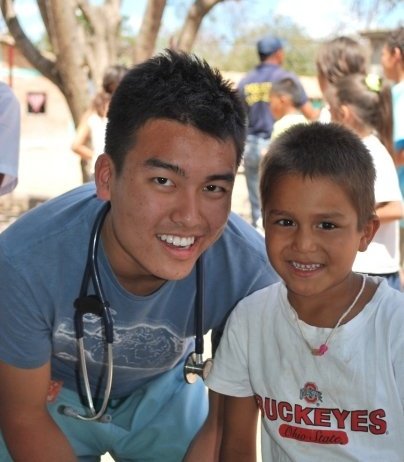We arrived in Johannesburg yesterday and checked into our hotel at Southern Sun…it’s kind of like the South African version of Sheraton/Starwood hotels. I was pretty happy with them because there was free food in the lobby every evening!
For our full day in Johannesburg, South Africa, we were able to go explore the city with Jimmy, our outspoken tour guide. He took us to a Zulu village where the people were making camel hair sandals with the Nike symbol cut out, shops were filled with tribal clothing and weapons, and shops were filled with African “medicine”. The people in this part of town were not the friendliest in my opinion. Everybody seemed to be just staring at our group and thinking “why are these people here?” It was probably because there were no other visitors – except us.
Afterwards, Jimmy took us through Johannesburg and into Soweto – the infamous city where many riots and conflicts occurred due to apartheid. As we traveled into a shanty town filled with small houses with tin roofs, we encountered a group of 3 women who were just standing by the fence. Suddenly, Jimmy stopped the van and began asking the pregnant girl questions about her education and her family. Jimmy told the girl to stop having babies, get a job, and use condoms. While I can’t imagine having someone stop and say that to someone in the US, the young lady did not seem to be offended. Afterwards, some members of our group was very upset about what happened, but in my opinion, I felt that more people need to be told what is obvious in order to promote a more productive society.
In Soweto, we stopped on the side of the road and some of us entered some of the people’s homes in order to see the conditions and say hi. Again, this would not be acceptable in the US, but here in Soweto, it was alright. The homes were in pretty bad shape. However, what was saddening the most to me was the family structure. Most of the homes consisted of a grandmother and many young children. In comparison, most of the homes back in Honduras consisted of an entire family: dad, mom, and children. The effects of HIV/AIDS were heartbreaking to see as the old grandmother had to take care of her grandchildren.
Only a few minutes of traveling on the bus, we were at the site of the new stadium that South Africa was building for the 2010 World Cup games. The futuristic looking stadium was under heavy construction as workers were putting in the finishing touches. The main parts of town that tourists were going to see are building heavily retouched to look extra nice. Sod is being planted, roads near Nelson Mandela’s house are being redone, and posters of excitement and anticipation are plastered throughout the city. I hope that the visitors who come to South Africa not only see the improvements made to the city, but also realize the much work that still needs to be done in order to address the issues of race and health in the city. I know that the World Cup brought a lot of development and growth to South Korea, so I hope that South Africa experiences the same next year.
Finally, we went to the Apartheid museum where we were able to learn more about the history of this tragic period in human history. Apartheid means separateness in Afrikaans. From 1948 to 1994, blacks, whites, colored, and “Indians” in South Africa were all treated separately under the legislation. As I walked through the museum, I was amazed at how recent these acts of discrimination actually took place. Even after I was born, acts of incredible segregation were taking place in South Africa. All the opponents of the government were put in jail and many were never seen again. Finally, the South African government saw the wrong that they were doing and decided to repeal the apartheid laws and release all the prisoners who were being kept captive for breaking the unlawful laws.
The Apartheid Museum really got to me because the government of South Africa had absolutely no right to treat non-whites as second-class citizens. Not only were blacks racially discriminated against, but also Indians, mulattos, and Asians. However, even in the darkness, there were glimpses of light that were seen through the people who went against their government and stood up for what is right. While many of these people died for the cause, they never gave into accepting that apartheid was something that was justifiable. This just reminded me of Daniel and how he stood up to the King. He was thrown into the lion’s den, but God was with him throughout the entire time.
I definitely would like to come back to South Africa some other time and discover more about the cities and the countryside.
Oh P.S., and the Jacaranda trees along the roads are gorgeous.
Women's Place...
16 years ago

No comments:
Post a Comment